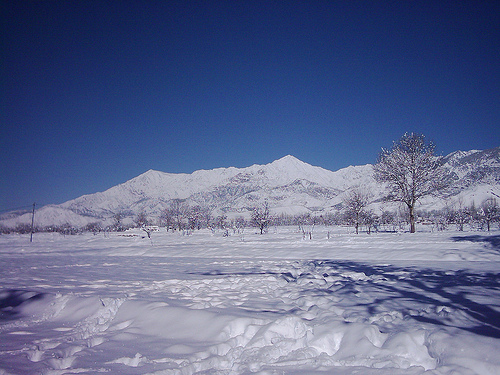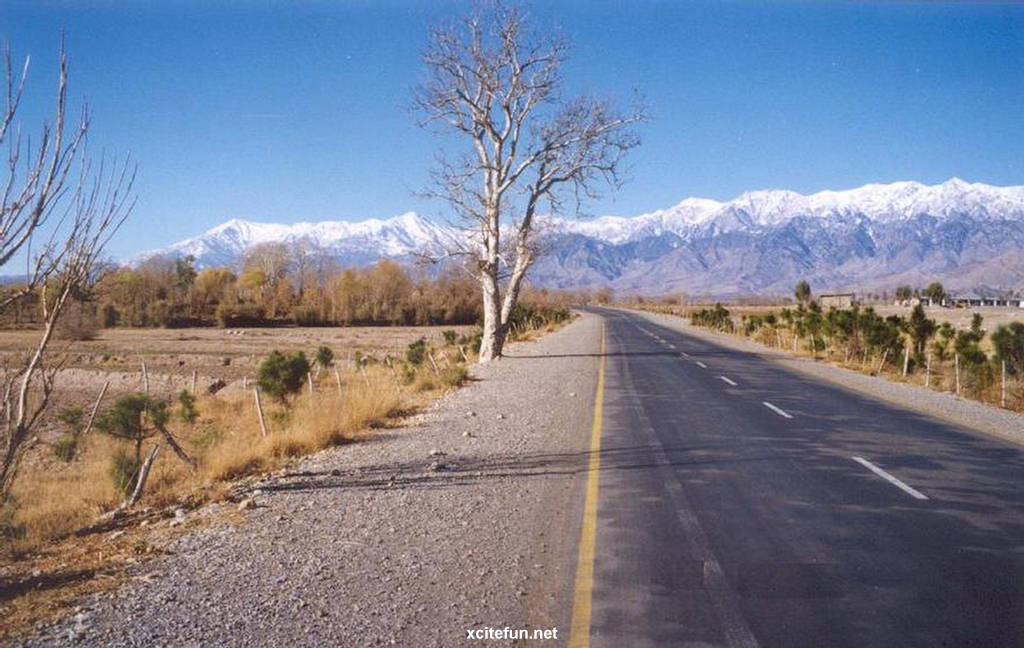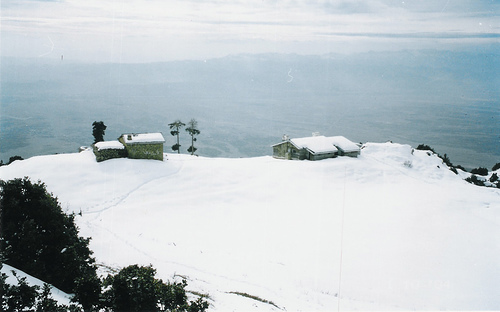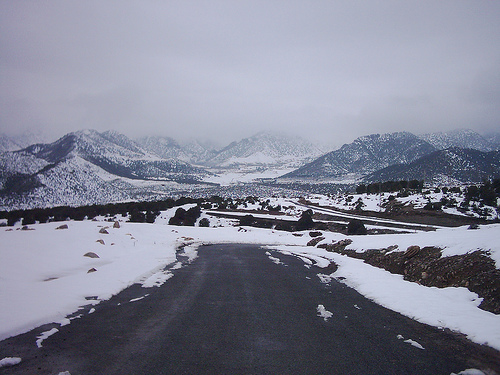Kurram Valley
Kurram Valley (Urdu: وادی کُرم) which is a beautiful valley in the northwestern part of Pakistan neighboring Afghanistan. Bangash and Turi Two Major Tribe's Live In Kurram Agency Until the year 2000, when divisions were abolished, the Kurram District used to be part of the Peshawar Division of the North-West Frontier Province of Pakistan.
The name Kurram comes from the river Kurram which flows along the valley. The valley in the north is surrounded by snow-covered or 'White' Mountains (the Safed Koh) which also forms the natural border with Afghanistan.
In lower kurram agency MAkhizai is the most beautiful place in lower kurram agency which population depend upon on two tibal (Bangash and Turi) Makhizai have natural richness depended upon on hills and mountain which have forest (ever green) and field for growing like rice and wheat etc. are popular growth in them. The Kurram River drains the southern flanks of the Safed Koh mountain range, and enters the Indus plains north of Bannu. It flows west to east and crosses the Paktia Province Afghan-Pakistan border at Coordinates: 33°49′N 69°58′Eabout 80 km southwest of Jalalabad, and joins the Indus near Isa Khel after a course of more than 320 km (200 mi). The district has an area of 3,310 km2 (1,280 sq mi); the population according to the 1998 census was 448,310. It lies between the Miranzai Valley Bangash Clans and the Afghan border, and is inhabited by Turi Pashtuns, a sect of Turki (Turkish origins) on the western and central side who are supposed to have subjugated the Bangash about six hundred years ago. The majority of the population is Pashto-speaking, but unlike most Pashtuns they are Twelver Shiites. The eastern portion of the valley is inhabited mostly by Sunnite Pashtuns, mainly of the Jaji, Mangal, Paras and the remnants of the Bangash clans.
History
The Kurram Valley in ancient times offered the most direct route to Kabul and Gardez. The route crossed the [[Gavi Jaji Aryob pass]] 3,439 m (11,283 ft) high, just over 20 km west of modern Parachinar, but was blocked by snow for several months of the year.
The valley is highly irrigated, well-peopled, and crowded with small fortified villages, orchards and groves, to which a fine background is afforded by the dark pine forests and alpine snows of the Safed Koh. The beauty and climate of the valley attracted some of the Mughal emperors of Delhi, and the remains exist of a garden planted by Shah Jahan. According to the Gazetteer of Kurram, the richness of the land gradually weaned the Turks from their nomadic life. Sections built villages and settled permanently; they ceased to be Kuchi and became Kothi this abandonment of their nomadic habits by the majority of the resulted, as it was bound to do, in a contraction of the area in effective possession. The upper Kurram plain was safe as their head-quarters, but hills and slopes below the Safed Koh and Mandher over which their graziers had kept an efficient watch, now afforded a menace as a place in which an encroaching tribe could established itself. To guard against this settlements of Mangals and Muqbols were half invited half allowed to push themselves in conditions of vassalage, and on promise to afford a buttress against any enemy aggression. In the lower Kurram, where for climatic reasons candidates for settlements were fewer, the problem was not easily solved. The Chardi Turis seem to have been the first to abandon their nomadic life.As the numbers who went down to graze every year became less, the area under control contracted.Sangroba and Hadmela were left far behind and as the Turis receded the Watizai Zaimushts gradually pushed in, until all that was left was a settlement at and about Alizai. On the western side the Saragallas retained, and still largely retain their habits. They too put in settlements around Biliamin and after much intervening warfare had finally to admit Bangashes brother not as vassals, but for the rest they retain unimpaired the rights on the western bank which they acquired at the time the conquest.
With Chardis this was far from being the course left unsupported by their Kuchis they maintained a precarious existence at Alizai until even then they had to give three-fifths of their land to the Watizai Zaimushts in return for their assistance in a feud they had entered upon with Bilyamin. Consequently the hills and the grazing grounds passed from the Turizun to the Zaimushtzun and as the other Zaimushts section being unopposed had settled themselves on the left bank below Sadda.
In the early 19th century the Kurram Valley was under the government of Kabul, and every five or six years a military expedition was sent to collect the revenue, the soldiers living meanwhile at free quarters on the people. It was not until about 1848 that the Turis were brought directly under the control of Kabul, when a governor was appointed, who established himself in Kurram. The Turis, being ShiahMuslims, never liked the Afghan rule.
During the second Afghan War, when Sir Frederick Roberts advanced by way of the Kurram Valley and the Peiwar Kotal to Kabul, the Turis lent him every assistance in their power, and in consequence their independence was granted them in 1880.
The administration of the Kurram Valley was finally rendered to British authorities, at the request of the Turis themselves, in 1890. Technically it ranked, not as a British district, but as an agency or administered area.In lower kurram agency BAGZAI is the most beautiful place in lower kurram agency which population depend upon on two tribal BANGASH and Turi. bang mean to blast or tear and ash means into soil according to Oxford Dictionary. BAGZAI have natural richness depended upon on hills and mountain which have forest (ever green) and field for growing like rice and wheat etc. are popular growth in them.
Two expeditions in the Kurram Valley also require mention: (1) The Kurram expedition of 1856 under Brigadier-General Sir Neville Chamberlain. The Turis, on the first annexation of the Kohat district by the British, had repeatedly leagued with other tribes to infest the Miranzai valley, harbouring fugitives, encouraging resistance, and frequently attacking Bangash and Khattak villages in the Kohat district. Accordingly, in 1856 British forces numbering 4,896 troops traversed their country, and the tribe entered into engagements for future good conduct. (2) The Kohat-Kurram expedition of 1897 under Colonel W. Hill. During the frontier risings of 1897 the inhabitants of the Kurram valley, chiefly the Massozai section of the Orakzais, were infected by the general excitement, and attacked the British camp at Sadda and other posts. A force of 14,230 British troops traversed the country, and the tribesmen were severely punished. In Lord Curzon's reorganization of the frontier in 1900-1901, British troops were withdrawn from the forts in the Kurram Valley, and were replaced by the Kurram militia, reorganized in two battalions, and chiefly drawn from the Turi tribe.
In recent years the Kurram Valley has once again assumed a very strategic position and the site of intense Taliban activities. The armed forces of Pakistan extended their major offensive against Al-Qaeda and Taliban elements in FATA dubbed Operation Rah-e-Nijatto Kurram in December 2009.







